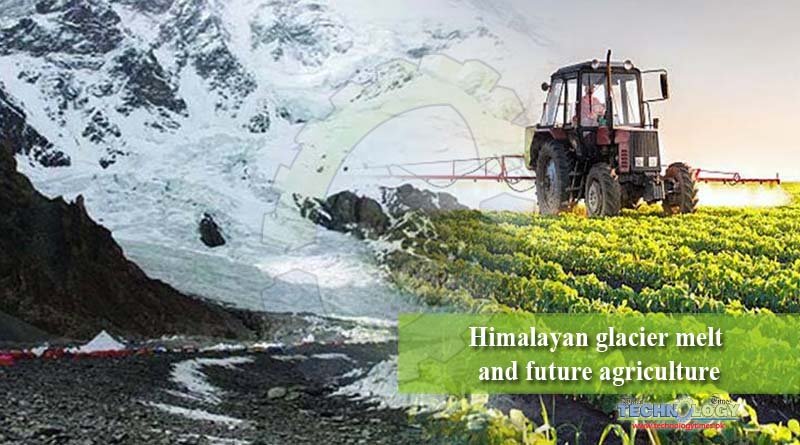Pakistan’s agriculture sector plays a central role in the economy which relies on seasonal rainfall and melt water from glaciers.
 Summer heat waves in last ten years have induced glaciers melting at a higher rate than in the same period before which is big threat to agriculture sector of country. About 200 million people of this densely populated region depend on melt water and snow from the Himalayan glaciers for their crop production and livelihoods. Dependence is largest in the Indus basin, where the agricultural areas see little precipitation and therefore rely on other water sources.
Summer heat waves in last ten years have induced glaciers melting at a higher rate than in the same period before which is big threat to agriculture sector of country. About 200 million people of this densely populated region depend on melt water and snow from the Himalayan glaciers for their crop production and livelihoods. Dependence is largest in the Indus basin, where the agricultural areas see little precipitation and therefore rely on other water sources.
In the dry season up to 60% of the total irrigation withdrawals originate from mountain snow and glacier melt. In particular for a crop like sugarcane and rice and other crops of high water demand, it is impossible to grow under water stress condition. The Indus basin has complex irrigation system consisting of canals to transport water to the agricultural fields, sometimes over hundreds of kilometers.
Climate Change and Food Security in Pakistan
Climate change is likely to be problematic for the food security of farmers in Pakistan. Global warming will make persistent extreme weather more likely – including longer heatwaves, droughts and shorter rainy periods that will ultimately affect crop production. Overall the number of days it rains is less than in the past, but when it does rain, the volumes are greater with violent downpours and hail can destroy crops. The weather is just not as predictable as it was before. Melt water provides our farms sufficient water to irrigate our land under drought period of minimal rainfall. Timely availability of glacier melt water is most crucial for rice and cotton production (major summer crops).
Keeping in mind the increasing uncertainty of monsoon and accelerated melting process, farmers will need to adapt their practices to these changing circumstances with appropriate adaptation strategies and potential solutions for an emerging water crisis.
Farmers might need to adjust their sowing dates or change to crops that require less water. Rice is a water-demanding crop that is sown during the driest months of the year. It might be better to grow rice and sugarcane in areas with more water available.
The effectiveness of adaptation strategies is crucial for reducing the costs of climate change. Institutional and informational constraints that inhibit farmers from improving their farming practices needs to be rectified. Policy makers should focus efforts on treating adaptation as part of agricultural development policy.
Addressing the constraints in agriculture and better targeting interventions to facilitate adaptation could improve short-term food security and also better prepare farmers in our region for future challenges brought by a changing climate.
The Author is associated with Aberystwyth University, United Kingdom as Environment Scientist and has vast experience of working on Pakistan Agriculture and Food Security. Email: mna@aber.ac.uk
